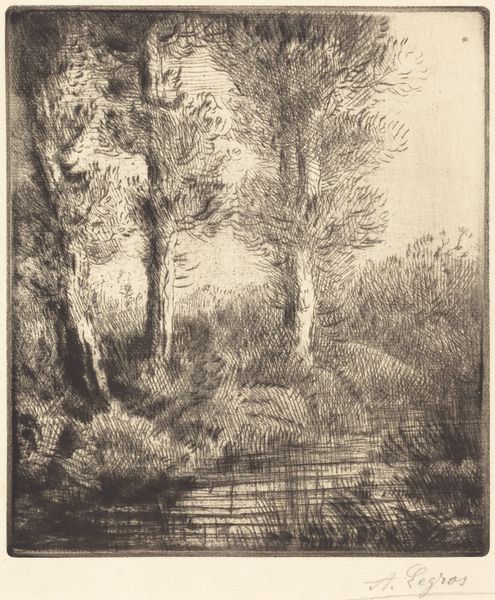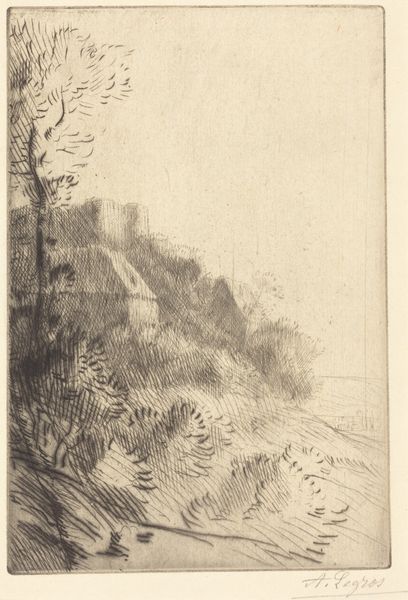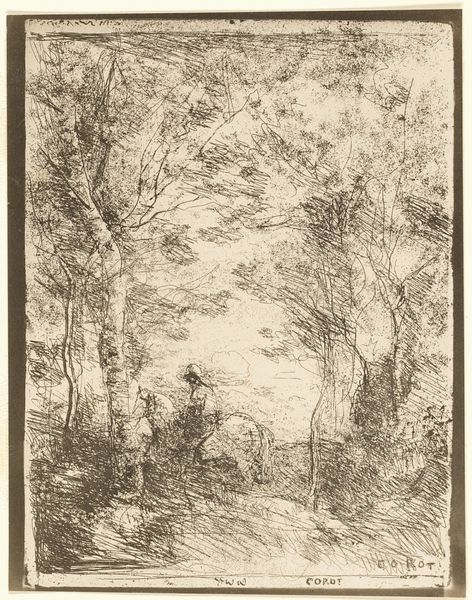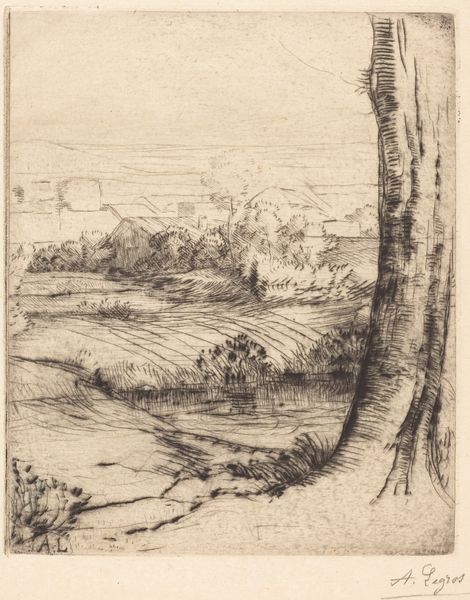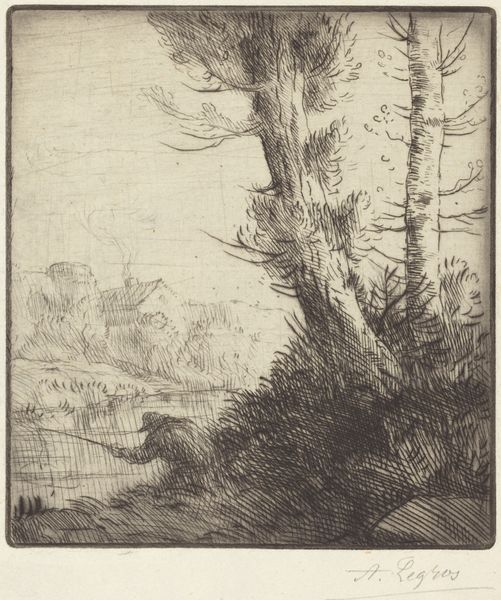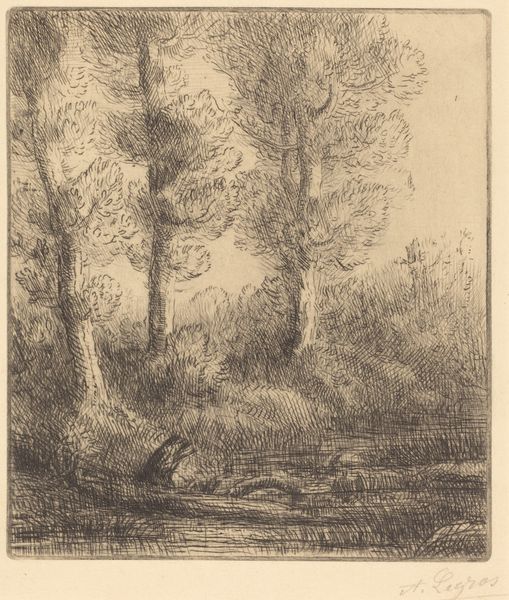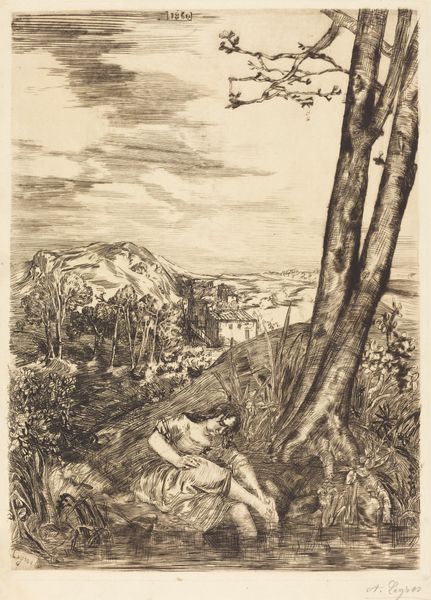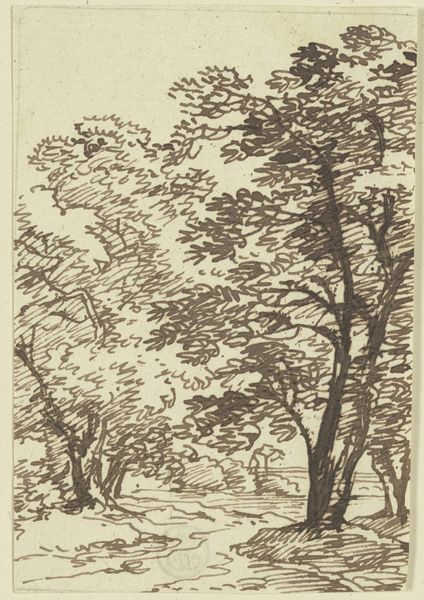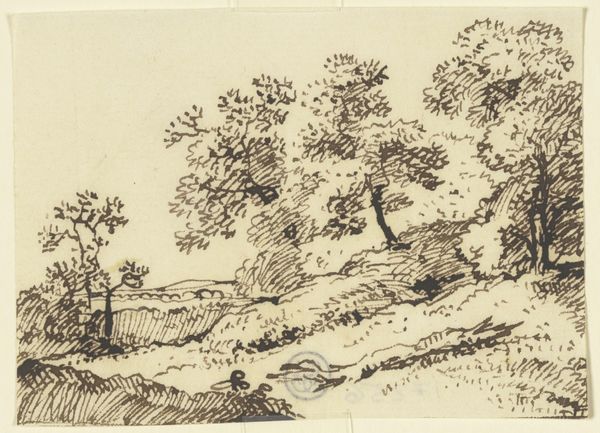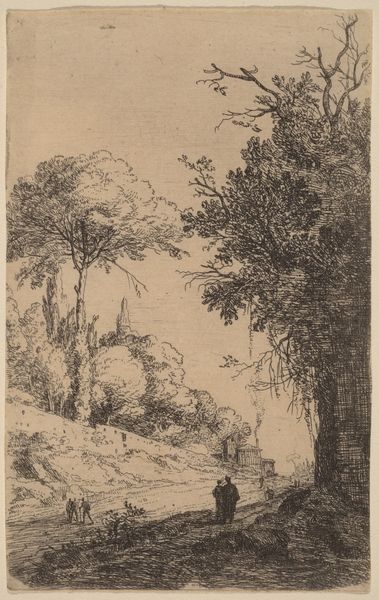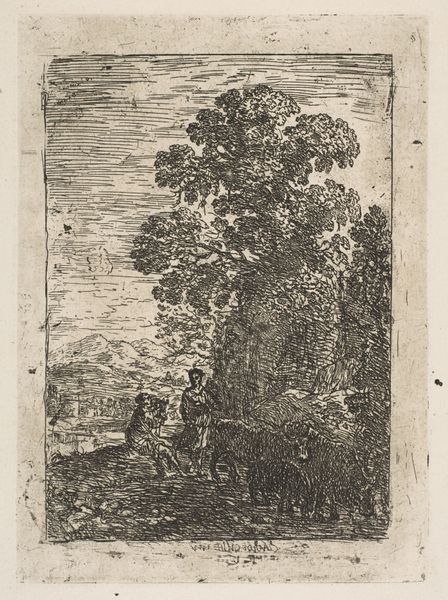
print, etching
# print
#
etching
#
landscape
#
realism
Copyright: National Gallery of Art: CC0 1.0
Alphonse Legros made this etching, “Along the Marne,” using a metal plate, acid, and ink. In this process, the artist covers a metal plate with a waxy, protective layer, then scratches an image into it. The plate is then submerged in acid, which bites away at the exposed metal, creating incised lines. The plate is inked, and then wiped clean, leaving ink only in the etched lines. Finally, it’s pressed onto paper, transferring the image. Look closely at the density of lines. Legros varied the depth and concentration of these lines to create a range of tones and textures. The result is an image full of detail and atmosphere, but also one made through labor intensive processes. This kind of printmaking, while not as celebrated as painting, demands incredible skill. Etching occupies an interesting place, not quite mass production but not unique either. By attending to the material reality of the process, we can appreciate the full scope of Legros' achievement, and challenge traditional distinctions between art and craft.
Comments
No comments
Be the first to comment and join the conversation on the ultimate creative platform.
